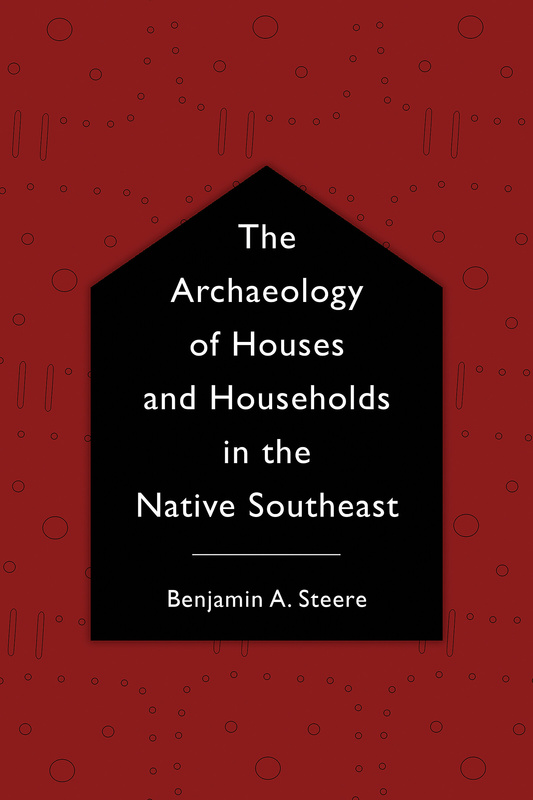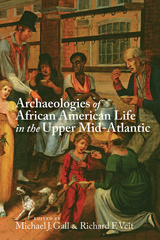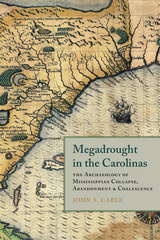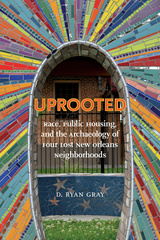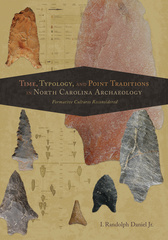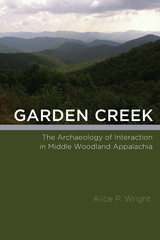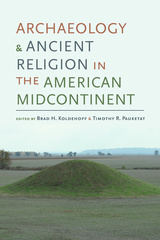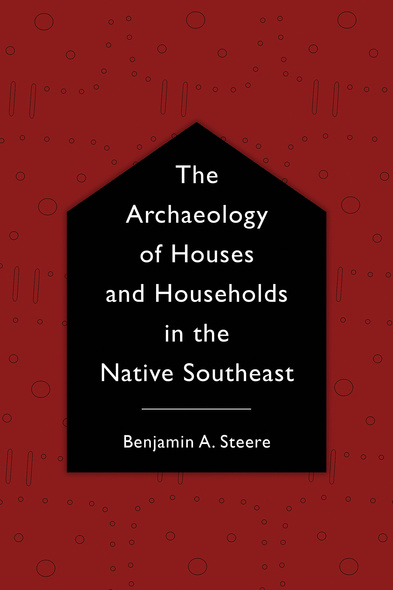
232 pages, 6 x 9
38 B&W figures - 17 tables
Hardcover
Release Date:11 Apr 2017
ISBN:9780817319496
The Archaeology of Houses and Households in the Native Southeast
University of Alabama Press
Explores the evolution of houses and households in the southeastern United States from the Woodland to the Historic Indian period (ca. 200 BC to 1800 AD)
The Archaeology of Houses and Households in the Native Southeast contributes enormously to the study of household archaeology and domestic architecture in the region. This significant volume combines both previously published and unpublished data on communities from the Southeast and is the first systematic attempt to understand the development of houses and households as interpreted through a theoretical framework developed from broad-ranging studies in cultural anthropology and archaeology.
Steere’s major achievement is the compilation of one of the largest and most detailed architectural datasets for the Southeast, including data for 1,258 domestic and public structures from 65 archaeological sites in North Carolina, Georgia, Alabama, Tennessee, Kentucky, and the southern parts of Missouri, Indiana, and Illinois. Rare data from hard-to-find cultural resource management reports is also incorporated, creating a broad temporal and geographic scope and serving as one of many remarkable features of the book, which is sure to be of considerable value to archaeologists and anthropologists interested in comparative studies of architecture.
Similar to other analyses, Steere’s research uses multiple theoretical angles and lines of evidence to answer archaeological questions about houses and the people who built them. However, unlike other examinations of household archaeology, this project spans multiple time periods (Woodland, Mississippian, and Historic); is focused squarely on the Southeast; features a more unified approach, using data from a single, uniform database; and privileges domestic architecture as a line of evidence for reconstructing daily life at major archaeological sites on a much broader scale than other investigations.
The Archaeology of Houses and Households in the Native Southeast contributes enormously to the study of household archaeology and domestic architecture in the region. This significant volume combines both previously published and unpublished data on communities from the Southeast and is the first systematic attempt to understand the development of houses and households as interpreted through a theoretical framework developed from broad-ranging studies in cultural anthropology and archaeology.
Steere’s major achievement is the compilation of one of the largest and most detailed architectural datasets for the Southeast, including data for 1,258 domestic and public structures from 65 archaeological sites in North Carolina, Georgia, Alabama, Tennessee, Kentucky, and the southern parts of Missouri, Indiana, and Illinois. Rare data from hard-to-find cultural resource management reports is also incorporated, creating a broad temporal and geographic scope and serving as one of many remarkable features of the book, which is sure to be of considerable value to archaeologists and anthropologists interested in comparative studies of architecture.
Similar to other analyses, Steere’s research uses multiple theoretical angles and lines of evidence to answer archaeological questions about houses and the people who built them. However, unlike other examinations of household archaeology, this project spans multiple time periods (Woodland, Mississippian, and Historic); is focused squarely on the Southeast; features a more unified approach, using data from a single, uniform database; and privileges domestic architecture as a line of evidence for reconstructing daily life at major archaeological sites on a much broader scale than other investigations.
This work is highly recommended for the overview of the development of architecture for the Woodland, Mississippian, and Historic Indian periods (200 BC to AD 1800); for its identification of the shift of maize agriculture as an economic approach to domestic architectural change; and for its summary of interesting research topics for the future.’
—North American Archaeologist
‘Archaeologist Steere presents a detailed analysis of changes in Native American domestic buildings between about 200 BCE and 1800 CE in the US Southeast and Mississippi Valley. His data-rich presentation covers details as complex as wall construction as well as more generalized features, such as shape, floor area and interior division, and settlement planning. Combining data sets with illustrations of houses and statistical analyses, the book is an academic study indispensable for libraries serving programs in anthropology, archaeology, and history, and regional programs in the US Southeast. Essential.’
—CHOICE
‘The Archaeology of Houses and Households in the Native Southeast is certain to become an essential reference for anyone doing native archaeology in the Southeast.’
—Robin Beck, author of Chiefdoms, Collapse, and Coalescence in the Early American South and coeditor of Fort San Juan and the Limits of Empire: Colonialism and Household Practice at the Berry Site
The book is an important contribution to household archaeology for many reasons, and some of Steere’s results are summarized here to illustrate the significance of his work. His findings indicate that environmental factors are not key to explaining architectural variability. Economic factors, such as major changes in subsistence economy, and social factors, such as status differences within a community, are more important. Also, the variability in house size and form at many Mississippian sites fits with the expectations of intra-community social ranking or stratification, although Steere points out that the range of variability in domestic architecture does not fit with simplistic distinctions between elites and commoners.’
—American Antiquity
‘A critically important work that moves beyond mere synthesis and summary, and includes interpretations of southeastern Indian lifeways only possible through an appropriate matching of methodology, scale of analysis, and an incredible amount of data.’
—Ramie A. Gougeon, coeditor of Archaeological Perspectives on the Southern Appalachians: A Multiscalar Approach
Benjamin A. Steere is assistant professor of anthropology at Western Carolina University.

